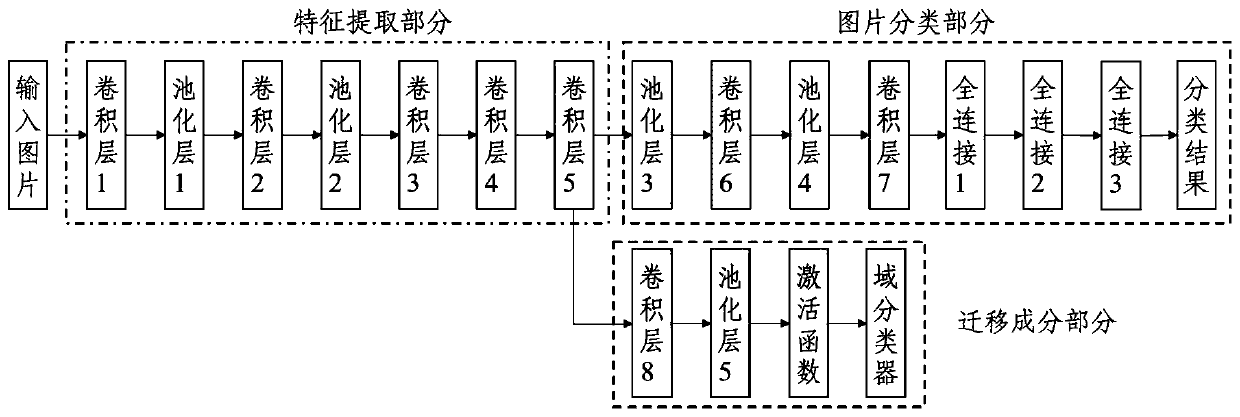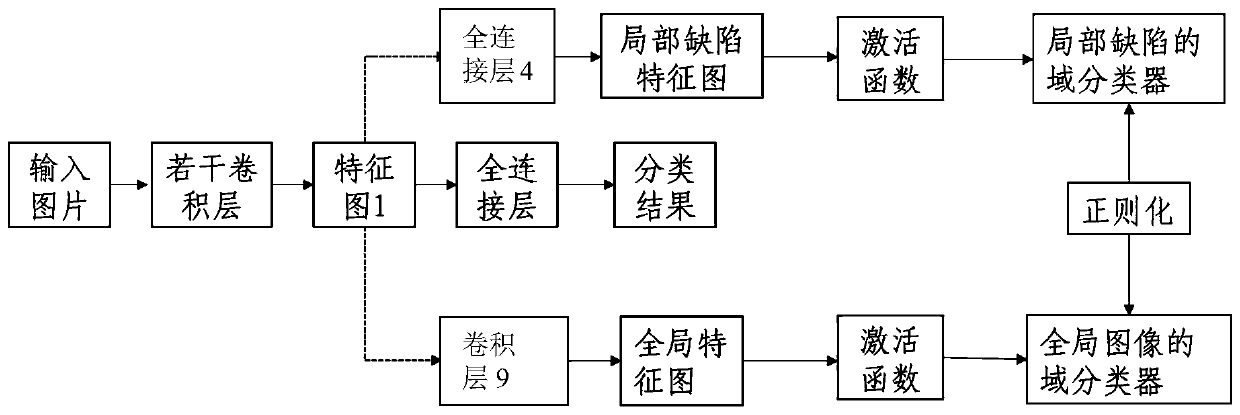Injection molding product surface image defect identification method based on transfer learning
A technology for injection molding products and transfer learning, applied in image enhancement, image analysis, image data processing, etc., can solve the problems of missing image details, high hardware requirements, overfitting, etc., to solve the dependence of training data, solve Lack of image samples and the effect of improving accuracy
- Summary
- Abstract
- Description
- Claims
- Application Information
AI Technical Summary
Problems solved by technology
Method used
Image
Examples
Embodiment Construction
[0038] The present invention will be further described below in conjunction with drawings and embodiments.
[0039] Such as figure 1As shown, the CNN (Convolutional Neural Network) model is mainly composed of convolutional layer 1, pooling layer 1, convolutional layer 2, pooling layer 2, convolutional layer 3, convolutional layer 4, convolutional layer 5, pooling Layer 3, convolutional layer 6, pooling layer 4, convolutional layer 7, fully connected layer 1, fully connected layer 2, and fully connected layer 3 are connected in sequence, and samples are input to convolutional layer 1 and extracted by convolutional layer 5 And output the first feature map, the first feature map is used as the input of the pooling layer 3 and the predicted defect classification result corresponding to the sample is output through the fully connected layer 3.
[0040] In the CNN (Convolutional Neural Network) model, the convolutional layer 1 to the convolutional layer 5 are used as the feature ex...
PUM
 Login to View More
Login to View More Abstract
Description
Claims
Application Information
 Login to View More
Login to View More - R&D
- Intellectual Property
- Life Sciences
- Materials
- Tech Scout
- Unparalleled Data Quality
- Higher Quality Content
- 60% Fewer Hallucinations
Browse by: Latest US Patents, China's latest patents, Technical Efficacy Thesaurus, Application Domain, Technology Topic, Popular Technical Reports.
© 2025 PatSnap. All rights reserved.Legal|Privacy policy|Modern Slavery Act Transparency Statement|Sitemap|About US| Contact US: help@patsnap.com



